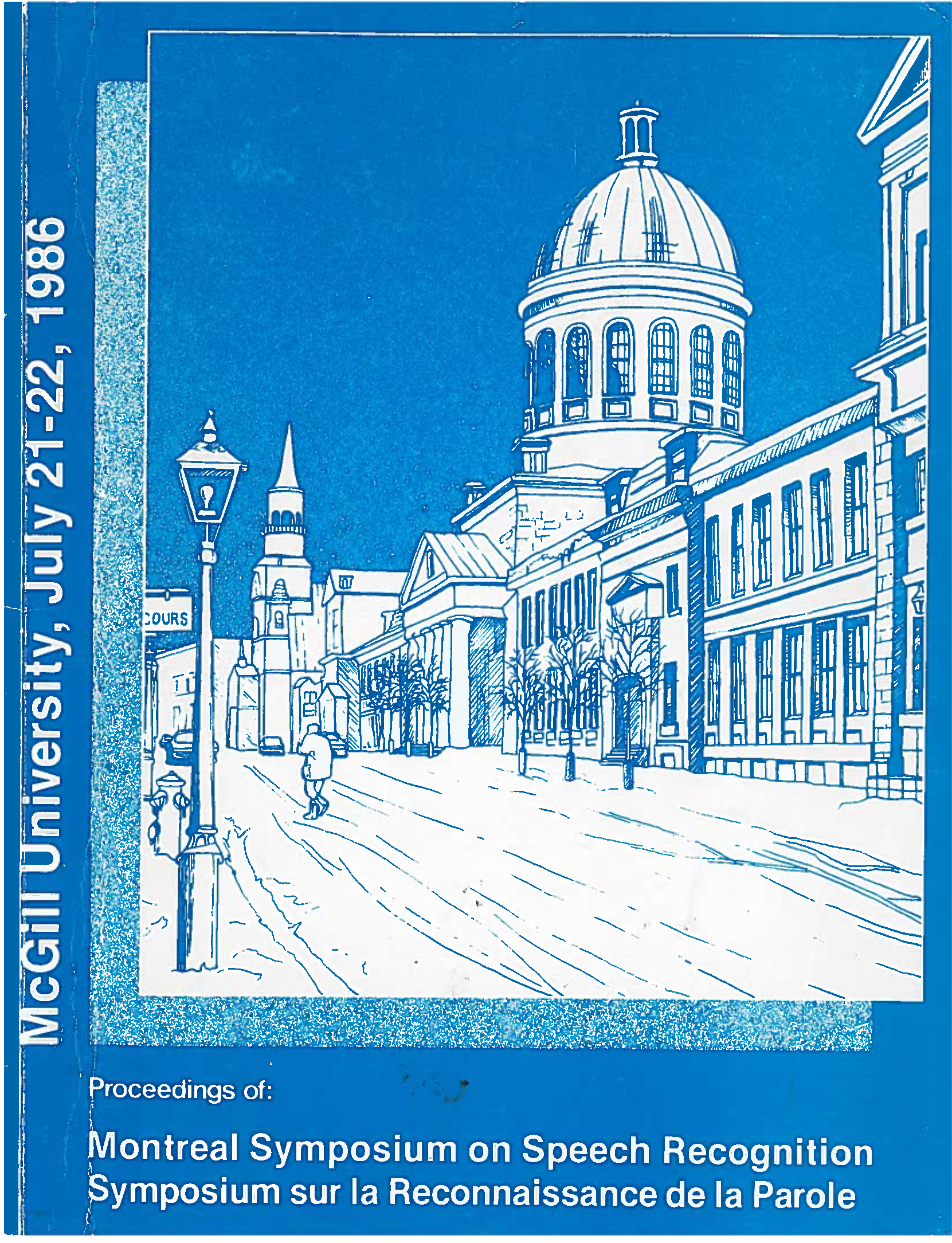Characterizing Formants Through Straight-Line Approximations Without Explicit Formant Tracking
Abstract
A new method for representing the formants of sonorant speech sounds is described. The method collapses the two-stage process of (1) formant tracking and (2) abstraction of rates and directions of formant movements into a one-step process of directly assigning straight-line segments to the resonance contours in the frequency-time space. The method resembles techniques used in vision research [1], and is also motivated by observations of specialized frequency-modulation detectors in the central auditory system [4]. The computational procedures are straightforward, leading to a description of the formant information for a given vowel by a list of oriented straight-line segments. The line segments are not assigned to particular formants, such as F2 . Instead, the recognition process is hypothesis-driven. For each vowel or diphthong to be recognized, a short description or expected ranges of frequency and orientation in the time-frequency dimensions for the first two formants is given. Feasibility of the method is demonstrated by applying it to the specific task of recognizing the vowels and diphthongs of American English in restricted context, spoken by multiple speakers.
Additional Files
Published
How to Cite
Issue
Section
License
Author Licensing Addendum
This Licensing Addendum ("Addendum") is entered into between the undersigned Author(s) and Canadian Acoustics journal published by the Canadian Acoustical Association (hereinafter referred to as the "Publisher"). The Author(s) and the Publisher agree as follows:
-
Retained Rights: The Author(s) retain(s) the following rights:
- The right to reproduce, distribute, and publicly display the Work on the Author's personal website or the website of the Author's institution.
- The right to use the Work in the Author's teaching activities and presentations.
- The right to include the Work in a compilation for the Author's personal use, not for sale.
-
Grant of License: The Author(s) grant(s) to the Publisher a worldwide exclusive license to publish, reproduce, distribute, and display the Work in Canadian Acoustics and any other formats and media deemed appropriate by the Publisher.
-
Attribution: The Publisher agrees to include proper attribution to the Author(s) in all publications and reproductions of the Work.
-
No Conflict: This Addendum is intended to be in harmony with, and not in conflict with, the terms and conditions of the original agreement entered into between the Author(s) and the Publisher.
-
Copyright Clause: Copyright on articles is held by the Author(s). The corresponding Author has the right to grant on behalf of all Authors and does grant on behalf of all Authors, a worldwide exclusive license to the Publisher and its licensees in perpetuity, in all forms, formats, and media (whether known now or created in the future), including but not limited to the rights to publish, reproduce, distribute, display, store, translate, create adaptations, reprints, include within collections, and create summaries, extracts, and/or abstracts of the Contribution.


